#polyphenols
Explore tagged Tumblr posts
Text

.
I'm less here today
fading into an uncertain future
there is more to be harvested than berries
every thing ripens in its own time
without harvest
we rot on the vine
.
62 notes
·
View notes
Text
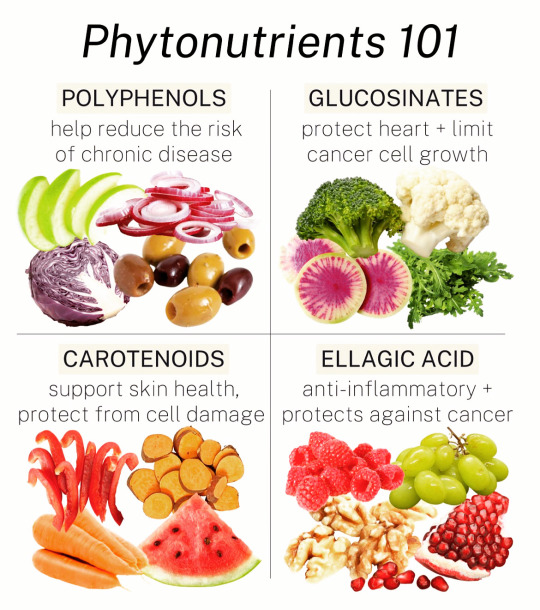
#nutrition#phytonutrients#polyphenols#disease management#disease prevention#Disease fighting#antiinflammatory#cancerfighting#eat the rainbow
169 notes
·
View notes
Text


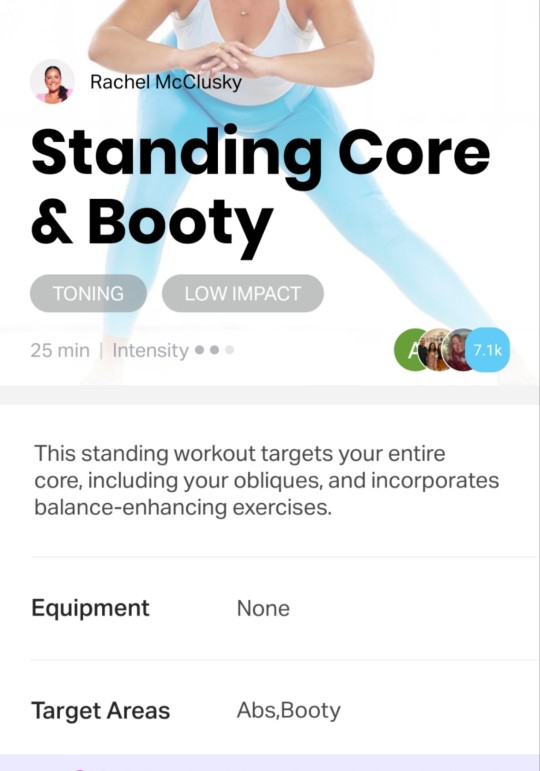






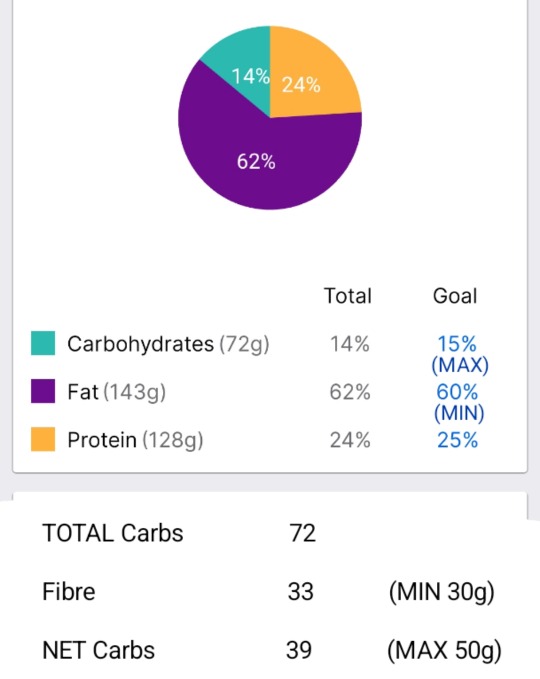
Back home and determined to shake off the recent doldrums.
Long story, but right now my physical health has thrown a real curveball.
Diabetic control - nope. Massive lows now rather than massive highs. But still mostly high.
Mucus thing - off the charts. Seriously.
Sleep - yeah, I've heard of that. Wonder what it's like!
Anyway, I'm easing myself into life as usual.
Short walk (30 mins) at 6am. Followed by a lower body/core home workout.
Then breakfast. My apple, cinnamon and mixed nuts (olive oil and sea salt added). Collagen filter coffee. I've missed my machine while I've been away in the motorhome, lol.
And I'm back to my modified version of ketobiotic.
That's a macro breakdown recommended by Mindy Pelz, who I have read a few books by, and I'm on her FB community group.
She recommends up to 50g net carbs and a minimum of 60% fat. She recommends much less protein than I prefer to have, so that's where the modification comes in.
I am making sure that I include fruit and veg (polyphenols for the win), but I'm not having masses of it.
I'm also trying very hard to keep that fibre up.
I have been using psyllium husk. Excellent thing for adding to my daily diet. I am now trying inulin powder. Another good source of fibre.
I've still got quite a lot of psyllium left, so I've mixed the two together, to get a double benefit, using both at once.
Oh yes, and if you notice the scratches on my leg, that's the fight I had with a very dense part of woodland on my last walk on holiday. Brambles vs me. I call it a draw, because they didn't stop me!
Back to normal 15hr fasting after dinner.
I answered a really nice message here this morning. And I guess today's post is one of those times I'm doing what I talked about in my reply.
This is my individual journey of health. Not every day is fabulous. But neither is every day tough.
Most usually somewhere in between those two markers.
#fitspo#fitspiration#fitblr#fitness#healthy living#health and fitness#fit#workout#fiton#suzieb-fit#health and nutrition#diet and nutrition#healthy nutrition#good nutrition#high fibre diet#high fat diet#polyphenols#healthy food#healthy eating#typeonediabetes#type 1 diabetic#type 1 diabetes
8 notes
·
View notes
Text
Polyphenols in Olive Oil: What They Are and Why They Matter

What Are Polyphenols? Polyphenols are plant compounds that help protect the body’s cells from damage caused by free radicals. Olive oil contains several types of polyphenols, including hydroxytyrosol and oleuropein, which play a key role in maintaining health. These substances not only help in cell protection but also improve overall well-being by reducing the risk of cardiovascular diseases and inflammation.
Polyphenols represent a group of over 800 different compounds found in plants, responsible for their color, taste, and aroma. The bitterness in olive oil, often found in high-quality extra virgin oils, is a sign of the presence of polyphenols that provide numerous health benefits. While many people may perceive this bitterness as a drawback, it actually indicates the quality of the oil and its potential health benefits.
Health Benefits of Polyphenols
Antioxidant Action: Polyphenols neutralize free radicals, preventing oxidative stress — a process that can lead to chronic diseases and aging. Regular consumption of olive oil high in polyphenols reduces the risk of various diseases, including cancer and cardiovascular issues.
Anti-Inflammatory Effects: Polyphenols help reduce inflammatory processes in the body, which is especially important for preventing chronic conditions such as arthritis and diabetes.
Heart Support: The polyphenols in olive oil contribute to improved cardiovascular health. They help lower “bad” cholesterol levels and normalize blood pressure, reducing the risk of heart diseases.
Brain Health: The antioxidants in polyphenols protect brain cells, supporting cognitive functions and decreasing the likelihood of developing neurodegenerative diseases like Alzheimer’s.

Olive oil, especially rich in polyphenols, is a valuable product for maintaining health. Including it in your daily diet helps protect the body from numerous diseases, improves heart and vascular health, and slows down aging processes.

3 notes
·
View notes
Text
Green Tea: Your Cup of Antioxidants, Your Elixir of Health
“Let food be thy medicine and medicine be thy food,” proclaimed the ancient Greek physician Hippocrates. Centuries later, this wisdom resonates as we explore the remarkable health benefits of green tea, a beverage that seamlessly blends the realms of nourishment and healing. Beyond its delicate flavor and soothing aroma, green tea harbors a treasure trove of antioxidants, those valiant defenders…
#antioxidants#brain health#cancer prevention#catechins#EGCG#green tea#health benefits#Healthy aging#heart health#immune system#liver health#polyphenols#skin health#weight management
3 notes
·
View notes
Text
10 Natural Painkillers for Chronic Pain Management
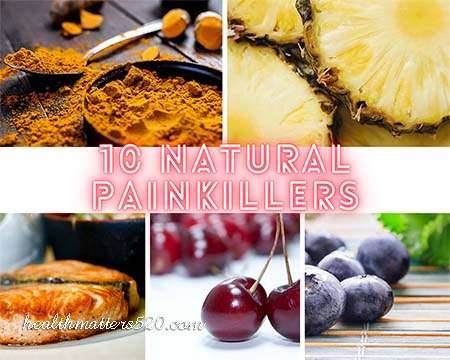
Welcome to our comprehensive guide on natural painkillers for chronic pain management. In today's world, more and more people are seeking alternative options for pain relief, moving away from traditional pharmaceuticals and towards natural remedies. In this article, we will explore the benefits of natural painkillers and why they have gained popularity among individuals looking for safe and effective ways to manage chronic pain.
Why People Are Turning to Natural Remedies for Pain Relief?
- Safety: One of the main reasons people are gravitating towards natural painkillers is the concern over the potential side effects and risks associated with conventional pain medications. Natural remedies are often perceived as safer alternatives, as they are derived from natural sources and have a lower likelihood of causing adverse reactions or dependency. - Holistic Approach: Natural painkillers align with the holistic approach to healthcare, focusing on treating the root causes of pain rather than simply masking the symptoms. By addressing the underlying issues contributing to chronic pain, natural remedies aim to provide long-term relief and improve overall well-being. - Reduced Dependency: Many conventional pain medications, such as opioids, can be highly addictive and lead to dependency. Natural painkillers offer a non-addictive alternative for chronic pain management, allowing individuals to regain control over their pain without the risk of developing a reliance on medication. - Fewer Side Effects: Pharmaceutical painkillers often come with a range of side effects, such as drowsiness, nausea, constipation, and digestive issues. Natural remedies, on the other hand, are generally well-tolerated and have a lower likelihood of causing adverse reactions, making them a favorable option for individuals who experience unwanted side effects from conventional medications. - Personal Preference: Some individuals simply prefer to explore natural remedies due to personal beliefs, cultural practices, or a desire to adopt a more natural and sustainable lifestyle. Natural painkillers provide an opportunity to manage chronic pain in alignment with these preferences. As the demand for natural pain relief options continues to rise, it is important to explore the benefits and effectiveness of natural painkillers for chronic pain management. By opting for these remedies, individuals can potentially reduce their reliance on pharmaceuticals, minimize side effects, and address the underlying causes of pain.

https://youtube.com/embed/odqrU8wJlAo
Top 10 Natural Painkillers
Ginger Ginger is a root herb commonly used in cooking and traditional medicine. It has been prized for its medicinal properties for centuries and is known for its distinct flavor and aroma. Not only does ginger add a delightful zing to dishes, but it also possesses powerful anti-inflammatory and analgesic properties that make it a potential natural painkiller for chronic pain.
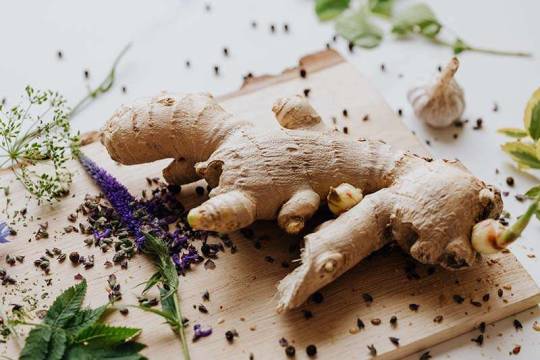
Scientific research has shown promising results regarding the effectiveness of ginger in treating chronic pain. Several studies1 have indicated that the active compounds found in ginger, such as gingerols and shogaols, have anti-inflammatory effects that can help alleviate pain. These compounds work by inhibiting the production of inflammatory chemicals in the body, reducing swelling and discomfort associated with chronic pain conditions like arthritis, migraines, and muscle soreness. A study2 published in the Journal of Pain reported that ginger supplementation significantly reduced muscle pain in people with moderate to severe muscle pain. Another study3 in the Journal of Alternative and Complementary Medicine found that ginger extract was effective in reducing pain and stiffness in individuals with osteoarthritis. While ginger has demonstrated promising pain-relieving properties, it is important to note that it may not work the same for everyone or for all types of chronic pain. It is always advisable to consult with a healthcare professional before incorporating ginger into your pain management regimen. Although ginger is generally considered safe, some individuals may experience mild side effects such as heartburn, stomach upset, or diarrhea when consuming excessive amounts. It is recommended to start with small doses and gradually increase as tolerated. Additionally, ginger may interact with certain medications, such as blood thinners, so it is crucial to consult with a healthcare provider if you are taking any medications or have any underlying health conditions. In conclusion, ginger is a natural painkiller known for its anti-inflammatory properties and potential effectiveness in managing chronic pain. While scientific research supports its use, individual results may vary. As with any natural remedy, it is important to use ginger responsibly and seek professional advice if you have any concerns or pre-existing conditions. By incorporating ginger into your pain management routine, you may find relief from chronic pain while enjoying its delicious flavor and health benefits. Turmeric Turmeric is a vibrant yellow spice commonly used in Indian and Asian cuisine. It comes from the root of the Curcuma longa plant and has been used for centuries in traditional medicine for its various health benefits. Turmeric contains a compound called curcumin, which is responsible for its therapeutic properties and potential pain-relieving effects. Curcumin acts as a natural anti-inflammatory and analgesic agent, making it an attractive option for managing chronic pain. It works by inhibiting the production of inflammatory molecules in the body, reducing inflammation and the associated pain. Additionally, curcumin has antioxidant properties that help protect the body's cells from damage caused by free radicals.
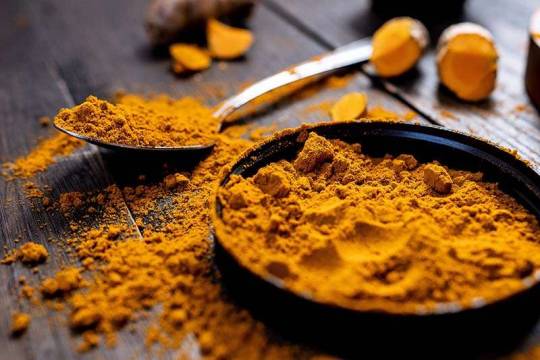
Scientific research has explored the potential of turmeric and curcumin in managing chronic pain. A study4 published in the Journal of Medicinal Food found that curcumin supplementation was effective in reducing pain and improving physical function in individuals with knee osteoarthritis. Another study5 in the Dialnet reported curcumin has the potential to reduce pain intensity and increase range of motion during exercise-induced muscle damage. While turmeric and curcumin are generally considered safe when consumed as part of a balanced diet, it is important to be aware of potential side effects and risks. High doses of curcumin may cause gastrointestinal issues such as stomach upset, diarrhea, or nausea. Additionally, curcumin may interact with certain medications, including blood thinners and antiplatelet drugs, so it is advisable to consult with a healthcare professional before using turmeric as a supplement or in concentrated forms. To enhance the absorption of curcumin, it is often recommended to consume turmeric with black pepper or with a source of fat, such as coconut oil. This can help improve its bioavailability and maximize its potential benefits. In conclusion, turmeric, with its active compound curcumin, offers potential benefits in the management of chronic pain due to its anti-inflammatory and analgesic properties. Scientific research supports its effectiveness in conditions such as osteoarthritis and fibromyalgia. However, it is important to be mindful of potential side effects and interactions, and to consult with a healthcare professional before incorporating turmeric or curcumin supplements into your pain management routine. Enjoy the flavorful addition of turmeric to your meals and explore its potential benefits for chronic pain relief. Cherries Cherries are delicious fruits that come in various forms, including sweet cherries and tart cherries. They are not only tasty but also offer potential health benefits, including their ability to alleviate chronic pain. Cherries contain antioxidants called anthocyanins, which give them their vibrant red color and contribute to their potential pain-relieving properties. The antioxidants found in cherries work by reducing inflammation in the body, which is a common underlying factor in many chronic pain conditions. By inhibiting the production of inflammatory molecules, cherries may help alleviate pain and improve overall pain management.
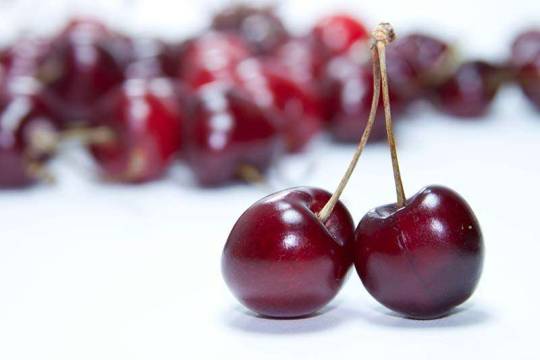
Scientific research has explored the effectiveness of cherries in treating chronic pain, particularly in conditions such as arthritis and gout. A study6 published in the Current Developments in Nutrition found that daily consumption of tart cherry juice results in improvement in mobility, relief of pain-related symptoms and quality of life, and selective markers of cartilage health. Another study7 in the Journal of Functional Foods reported that tart cherry juice decreased the levels of uric acid, a key factor in gout, leading to reduced pain and inflammation in patients with gouty arthritis. While cherries are generally safe to consume, it is important to note that they do contain natural sugars. Therefore, individuals with diabetes or those who need to watch their sugar intake should consume cherries in moderation. Additionally, some individuals may experience gastrointestinal discomfort or allergic reactions to cherries. If you have any concerns or known allergies, it is best to consult with a healthcare professional before incorporating cherries into your pain management routine. It is worth mentioning that the research on cherries and chronic pain is still evolving, and individual results may vary. However, cherries offer a natural and tasty option for individuals seeking potential pain relief from chronic pain conditions. In conclusion, cherries, with their antioxidant content, particularly anthocyanins, show promise in managing chronic pain by reducing inflammation. Scientific studies support their effectiveness in conditions like osteoarthritis and gout. However, it is important to consume cherries in moderation, especially for those with diabetes or known allergies. As part of a balanced diet, cherries can be a flavorful addition to your pain management strategy. Pineapple Pineapple is a tropical fruit known for its sweet and tangy flavor. It is rich in nutrients, including bromelain, a mixture of enzymes that are primarily found in the stem and core of the fruit. Bromelain is believed to have various health benefits, including its potential to alleviate chronic pain. Bromelain works by reducing inflammation in the body, which is often a contributing factor to chronic pain. It has been shown to inhibit the production of inflammatory compounds, such as prostaglandins and cytokines, thus offering potential pain-relieving effects. Additionally, bromelain may also help improve blood circulation, which can aid in reducing pain and promoting healing.
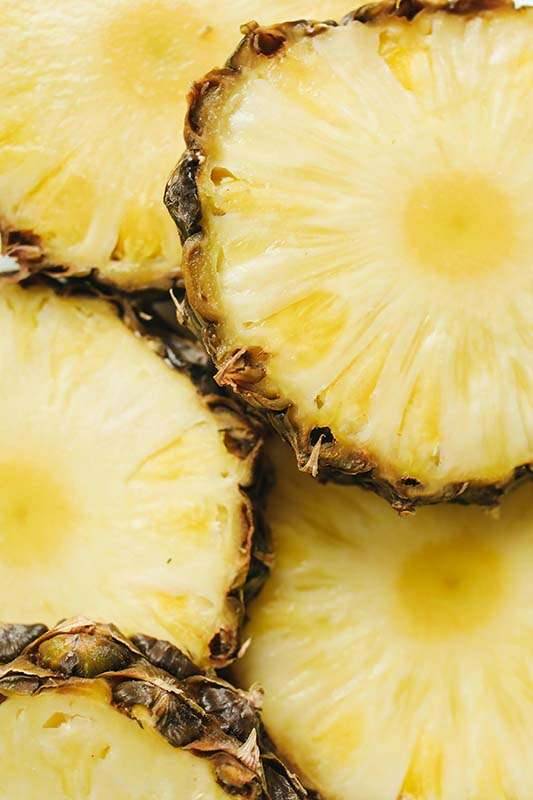
Scientific research has explored the effectiveness of pineapple and bromelain in managing chronic pain. A systematic review and meta-analysis8 published in the Nutrition and Health stated that moderate-quality studies demonstrated bromelain may be effective in ameliorating physical symptoms and improving general well-being in otherwise healthy adults suffering from mild knee pain in a dose-dependant manner. Another study9 published in the Journal of Advanced Periodontology & Implant Dentistry stated that bromelain is an efficient alternative to ibuprofen to manage pain after periodontal surgery, especially in patients with gastric ulceration and increased bleeding. While pineapple is generally safe to consume, it is important to be aware of potential side effects and risks. Some individuals may experience digestive discomfort or allergic reactions, such as itching or swelling, when consuming pineapple or bromelain supplements. If you have any known allergies or concerns, it is advisable to consult with a healthcare professional before incorporating pineapple or bromelain into your pain management routine. Furthermore, pineapple contains natural sugars, so individuals with diabetes or those who need to watch their sugar intake should consume it in moderation. It is also important to note that bromelain supplements may interact with certain medications, such as blood thinners, so it is crucial to consult with a healthcare provider if you are taking any medications or have any underlying health conditions. In conclusion, pineapple, particularly its bromelain content, offers potential benefits in managing chronic pain due to its anti-inflammatory properties. Scientific research supports its potential effectiveness as a safe and versatile therapeutic agent. However, it is important to consume pineapple in moderation, be mindful of potential allergies or digestive issues, and consult with a healthcare professional if you have any concerns or are taking medications. Enjoy pineapple as part of a balanced diet and explore its potential as a natural pain management option. Blueberries Blueberries are small, round berries that are not only delicious but also packed with nutrients and antioxidants. These berries are known for their vibrant blue color and sweet-tart taste. Blueberries contain various compounds such as anthocyanins, which give them their deep blue color and contribute to their potential health benefits, including their role in managing chronic pain. The antioxidants found in blueberries work by reducing oxidative stress and inflammation in the body. Chronic pain is often associated with inflammation, and the anti-inflammatory properties of blueberries may help alleviate pain symptoms. Additionally, the antioxidants in blueberries help protect cells from damage caused by free radicals, which can contribute to chronic pain conditions.
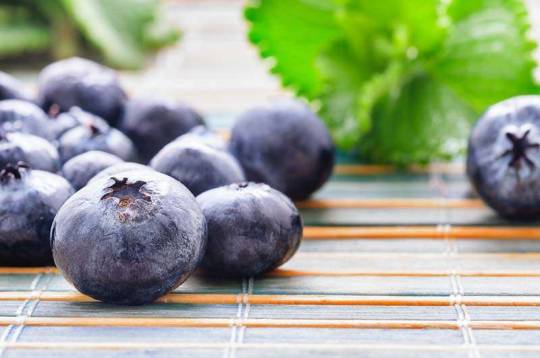
Scientific research has explored the potential of blueberries in managing chronic pain. Read the full article
#anthocyanins#bromelain#cherries#chronicpainmanagement#curcumin#darkchocolate#garlic#ginger#greentea#naturalpainkillers#oliveoil#Omega-3FattyAcids#polyphenols#salmon#Turmeric
2 notes
·
View notes
Text
Revitalize Your Gut and Shed Pounds with Thin 30 Probiotic by Physician's Choice
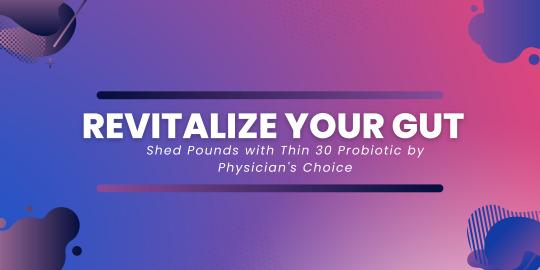
Are you looking to supercharge your weight management journey with the help of a high-quality probiotic? Physician's Choice presents Thin 30 Probiotic, a game-changer in the world of weight management supplements. As you read through this comprehensive article, we'll delve into the science behind Thin 30, its impressive ingredients, the benefits it offers, and even exclusive coupon offers to make your purchase even more enticing.
Unveiling Physician's Choice Thin 30 Probiotic
Weight management can be a challenging endeavor, and many factors come into play when striving to maintain a healthy weight. That's where Thin 30 Probiotic by Physician's Choice steps in as a trusted ally. Priced at $34.95, this exceptional supplement offers a multifaceted approach to support your weight management goals.
The Science of Thin 30 Probiotic Greenselect® Phytosome:
The Green Tea Complex One of the standout ingredients in Thin 30 Probiotic is the Greenselect® Phytosome, an all-natural, caffeine-free green tea complex. Extensively studied and clinically proven, this complex has a remarkable impact on weight loss and maintenance. In a compelling clinical study, overweight and obese individuals who incorporated Greenselect® into their daily routine, along with a balanced diet and moderate exercise, experienced an average weight loss of 30 pounds over 90 days. Yes, you read that right – 30 pounds! But what makes Greenselect® Phytosome so effective? It all boils down to green tea extract's rich polyphenols, which boast potent antioxidant activity. These polyphenols, in conjunction with Greenselect® Phytosome, have the potential to boost your metabolic rate, aiding in fat-burning – a critical factor in achieving and sustaining a healthy weight.
The Benefits of Thin 30 Probiotic

1. Weight Management Support The primary focus of Thin 30 Probiotic is to assist you in your weight management journey. By harnessing the power of Greenselect® Phytosome, this supplement provides an extra edge to your efforts, making it easier to reach your weight goals.
2. Restored Digestive Balance Probiotics are renowned for their gut-friendly properties. Thin 30 Probiotic contains six active and effective strains that can help restore digestive balance. A healthy gut is essential not only for proper digestion but also for overall well-being.
3. Metabolism Boost As previously mentioned, the Greenselect® Phytosome has the potential to boost your metabolic rate. This is particularly important when you're aiming to shed excess pounds, as a higher metabolic rate aids in burning calories more efficiently.
4. Organic Prebiotic Blend In addition to its probiotic strains, Thin 30 Probiotic features an organic prebiotic blend. Prebiotics serve as food for your probiotics, ensuring they thrive and work optimally in your gut. This combination enhances the overall effectiveness of the supplement.
Exclusive Coupon Offers We understand the importance of affordability when considering dietary supplements. As our valued reader, we're pleased to offer you exclusive coupon codes for Thin 30 Probiotic by Physician's Choice.
How to Incorporate Thin 30 Probiotic into Your Routine
To maximize the benefits of Thin 30 Probiotic, it's important to use it as directed. Simply take one capsule daily with a meal or as recommended by your healthcare provider. Consistency is key, so make it a part of your daily routine to experience the best results.
Final Thoughts
In conclusion, Physician's Choice Thin 30 Probiotic is a powerful tool for anyone seeking to manage their weight effectively and maintain digestive health. Backed by the science of Greenselect® Phytosome and enriched with probiotics and prebiotics, Thin 30 Probiotic offers a comprehensive approach to holistic well-being. Don't miss out on the exclusive coupon offers mentioned earlier – they provide an excellent opportunity to try this remarkable supplement at a discounted price. With the combination of the right lifestyle choices, a balanced diet, regular exercise, and Thin 30 Probiotic, you can embark on a successful weight management journey. Invest in your health and well-being today with Physician's Choice Thin 30 Probiotic. Your path to a healthier, leaner you starts here!
#Probiotics#Weight management#Digestive balance#Gut health#Green tea extract#Greenselect® Phytosome#Metabolism#Antioxidant#Polyphenols#Dietary supplement#Clinical study
3 notes
·
View notes
Text
To give some background, Sickle cell anemia patients suffer from oxidative stress due to chronic inflammation and self-oxidation of sickle hemoglobin. It is this reality that led many to explore treatment through anti-oxidant influences. While research on the effects of acacia gum specifically in sickle cell anemia is limited, there is some evidence to suggest that certain components found in acacia gum, such as polyphenols and dietary fiber, may have positive effects on blood parameters and overall health. Polyphenols, which are plant compounds with antioxidant properties, have been investigated for their potential to reduce oxidative stress and inflammation associated with sickle cell disease. Dietary fiber, which is highly present in acacia gum, may have a positive influence on gastrointestinal health and gut microbiota. Maintaining a healthy gut microbiome is important for individuals with sickle cell anemia, as they are more prone to infections due to their compromised immune system.
Link to the Study: https://pubmed.ncbi.nlm.nih.gov/28331623/
For additional information: https://www.gumarabicusa.com/gum-arabic-research#gum-arabic-medical-research
#gumarabic #constipation #Nutrition #Nutritionist #eatclean #healthylife #diarrhea #bloating #detox #prebiotics #prebiotic #guthealth #healthygut #superfoods #immunebooster #healthbenefits #nutrients #antiinflammatory #foodasmedicine #probiotics #probiotic #organicfood #immunesystem #immunesupport #nourishyourbody #metabolism #weightmanagement #Loveyourgut #guthealthy #acaciagum #hashabprebiotic #acaciaprebiotic #baobabprebiotic #acaciagum #inulin #hashab #inulinprebiotic #hashab_gum #acacia_senegal #acacia_seyal #dietary_fiber
#antioxidants#polyphenols#acacia gum#prebiotic#acacia prebiotic#hashab prebiotic#gum arabic#constipation#foodasmedicine#gumarabic#guthealth#probiotics#detox#nutrition#prebiotics#nutritionist#gut health#health tips#healthy habits#health and wellness#healthy eating#digestive health#anemia
2 notes
·
View notes
Link
1 note
·
View note
Text
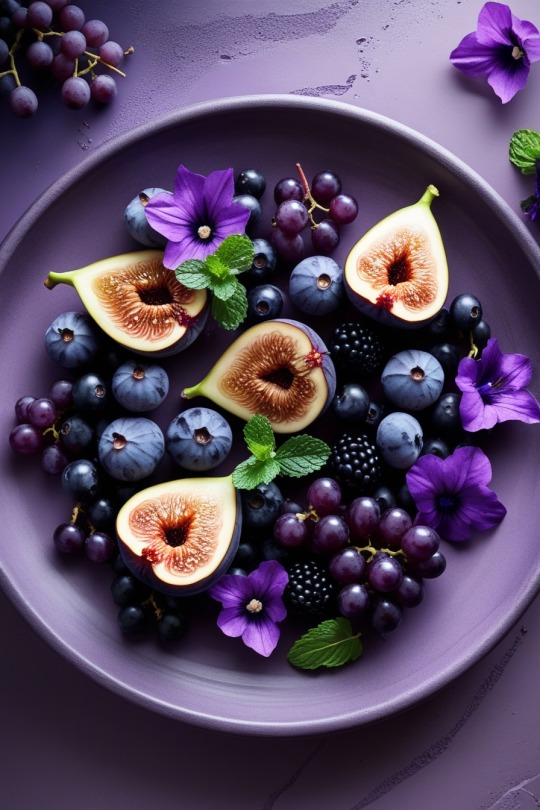
🍇 Dark fruit. Deep nourishment. Figs, grapes, blueberries, blackberries — rich in polyphenols, antioxidants, and depth. This isn’t just food, it’s a ritual for your nervous system. Grounding. Calming. Feminine.
💜 The darker the fruit, the deeper the wisdom. And the more quietly it heals.
#insightbloom#purplefoods#figseason#skinfood#polyphenols#emotionalnutrition#darkfruit#nourishyourself#healingthroughfood#softwellness#feminineenergy#groundingfoods#naturalbeautyfood#fruittherapy#gentlenutrition#mindfuleating#tumblrwellness#plantbasedglow#selfcaremeals#mysticfruit#beautyfromwithin#emotionalhealing#slowrituals#glowfromwithin
0 notes
Text
هل شعرت يومًا بلسعة خفيفة في حلقك عندما تذوقت زيت الزيتون البكر الممتاز🫒؟ تلك "اللدغة" ليست مجرد طعم غريب🍵… بل توقيع من مركّب نادر اسمه🌿:
🧬 الأوليوكانثال (Oleocanthal) "إيبوبروفين الطبيعة" 🍃
🔥 ماذا يفعل الأوليوكانثال في جسدك؟
يوقف الالتهاب مثل دواء الإيبوبروفين، لكن طبيعي. يقتل الخلايا السرطانية دون أن يلمس السليمة. يحمي دماغك من الزهايمر ويزيل البروتينات السامة. يحسّن دفاعات جسمك المضادة للأكسدة.
🧠 كيف يحمي دماغك؟
الأوليوكانثال: يعزز تنظيف الدماغ من بروتينات ألزهايمر ويُفعّل أنظمة دفاع طبيعية ضد الإجهاد التأكسدي ويُبقي الخلايا العصبية حية ونشيطة
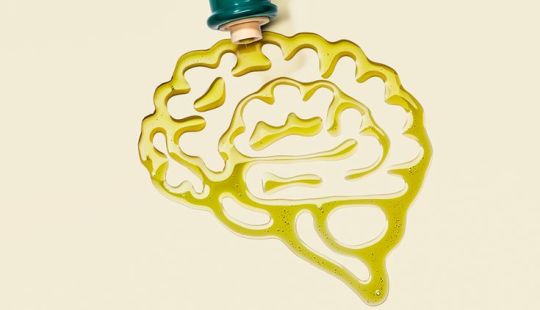
هل تصدّق أن ملعقتين فقط من زيت الزيتون يوميًا… قد تعمل مثل جرعة دواء مضاد للالتهاب؟
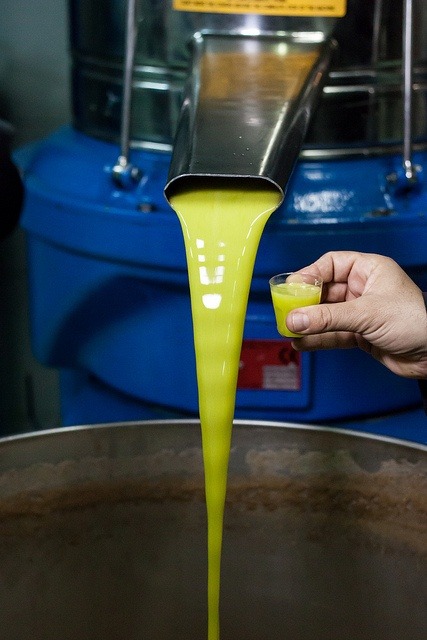
🛡️ كيف يواجه السرطان؟
هذا المركّب:
يعطّل إشارات النمو السرطاني 🚫 ويُخرّب غشاء "الليزوزومات" داخل الخلايا الخبيثة. يؤدي إلى موت الخلية المبرمج خلال ساعة واحدة فقط! ... دون أن يؤذي الخلايا السليمة🍵 💡

اختر زيت زيتون بكر ممتاز. ابحث عن الطعم "الحار اللاذع" بالحلق — دليل على غناه
1–2 ملعقة طعام يوميًا تكفي كبداية 🔁
المصدر: olive oil antioxidant - PMC - NCBI
#olive trees#olive oil#فلسطين#زيتون#زيت بكر#حوض المتوسط#antiinflammatory#antioxidants#polyphenols#pubmed
0 notes
Text
Did you know this about matcha? 🌱
Matcha tea is part of my morning ritual for all the benefits mentioned. Here’s why it should be yours….
FOCUS & ENERGY
Matcha is packed with antioxidants, and helps you focus and find that inner calm (thanks, L-theanine!). It’s a steady energy boost, opposed to a high followed by a crash that you might get with coffee or energy drinks.
ANTI-INFLAMMATORY & SKIN HEALTH
With more antioxidants than regular green tea, matcha helps fight free radicals and keeps your skin glowing.
STRESS RELIEF
L-theanine promotes relaxation without making you drowsy—perfect for tackling your busy day.
METABOLISM BOOST
Matcha has been linked to increased fat burning and improved digestion.
Pro Tip: Whisk your matcha with warm (not boiling) water, and try it with coconut milk for a creamy latte. Add a pinch of cinnamon or a drizzle of honey for extra flavor! 🍵
#matcha#drinks#antioxidants#polyphenols#antiinflammatory#brainhealth#tea#cancerfighting#anxietyrelief#energy#naturalenergy#mood#moodbooster#health#anticancer#healthy#vegan#Nutrition#focus
12 notes
·
View notes
Text
Are your favorite foods secretly enhancing your metabolism more than you think?
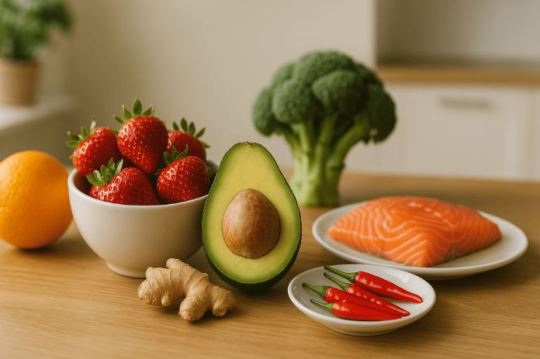
Many of us eat for energy, taste, or even comfort—but what if our daily meals could also fine-tune our metabolism at the cellular level? The article Meta Influencer Foods and Fruits That Help Boost Metabolism: What the Latest Research Reveals explores this compelling idea by spotlighting specific foods that do more than nourish. These “meta influencer” foods—ranging from green tea and lean proteins to richly colored fruits—may help regulate hormones, activate fat-burning enzymes, and even trigger gene expressions that promote metabolic balance.
What makes these foods so powerful? The article explains how certain bioactive compounds such as polyphenols, catechins, and capsaicin stimulate thermogenesis, enhance insulin sensitivity, and fuel mitochondrial activity. These processes work together to convert calories into energy more efficiently, reduce fat storage, and increase overall metabolic output. Foods like berries, grapefruit, kiwi, and leafy greens are praised not just for their nutrient content but for their ability to kick-start important metabolic responses in the body.
The power of timing is also discussed. Starting your day with a fiber and protein-rich breakfast can stabilize blood sugar levels, keep hunger hormones in check, and support sustained energy. The article outlines practical strategies like incorporating high-protein meals in the morning, eating fruit with healthy fat to slow glucose absorption, and avoiding overly processed foods that disrupt metabolic signals. This targeted approach encourages readers to think beyond calories and focus on the rhythm and quality of what they consume.
Moreover, the article offers realistic, accessible ways to incorporate these foods into daily life. Suggestions include smoothies with kefir and berries, adding spinach or chia seeds for fiber and omega-3s, and steaming vegetables to preserve key antioxidants. Rather than promoting restrictive diets or magic-bullet superfoods, the emphasis is on building a long-term, nourishing pattern that respects your body’s unique needs and promotes internal balance.
If you are curious about how food can do more than fuel your day—how it can actually upgrade your metabolism from within—this article is an insightful guide to getting started. Learn more by reading the full feature on Better Nutrition News, where food meets science to help you make smarter, healthier choices.
0 notes
Text
Seriously: Tea helps against Coronavirus.
by Dr.Harald Wiesendanger– Klartext What the mainstream media is hiding Commercially available black tea inactivates the SARS-CoV-2 virus by up to 99% within 10 seconds – further evidence of how easily the coronavirus pandemic could have been contained with natural remedies. When “killer germ” panic began to spread around the globe in early 2020, Malak Esseili, a virologist at the Center for…
#Betaisodona#Black tea#Coronavirus#Coronavirus pandemic#Covid-19#Eucalyptus mint tea#Green tea#Harald Wiesendanger#Hydrogen peroxide#Klaus-Dieter Zastrow#Licorice root#Malak Esseili#Mint tea#Polyphenols#Quercetin#Raspberry leaf hibiscus flower tea#Resveratrol#Sage#SARS-CoV-2#Secondary plant substances#Tea#Thyme#Viral infectivity#Viral load#Vitamin C#Vitamin D#Zinc
1 note
·
View note
Text
Is it Healthy to drink Wine everyday?
Over the years, plenty of studies have been published about the antioxidant properties and health benefits of wine. In general, the consensus has seemed to be that a glass or two of wine a day is okay, if not healthy. But more and more research has begun to say otherwise about alcohol...
0 notes
Text
Green tea is celebrated for its numerous health benefits, making it a valuable addition to a balanced and health-conscious lifestyle. Rich in antioxidants such as catechins and polyphenols, green tea helps neutralize harmful free radicals in the body, reducing cellular damage and lowering the risk of chronic diseases. Regular consumption of green tea is also linked to improved cardiovascular health, as it can reduce LDL cholesterol levels and enhance arterial function. Furthermore, its natural compounds are associated with boosted metabolism, supporting weight management efforts when combined with a healthy diet and exercise. Additionally, green tea contains amino acids like L-theanine, which promote mental clarity and relaxation, making it beneficial for stress management and cognitive function. These health-promoting properties highlight green tea as a powerful ally in achieving and maintaining overall wellness.
1 note
·
View note